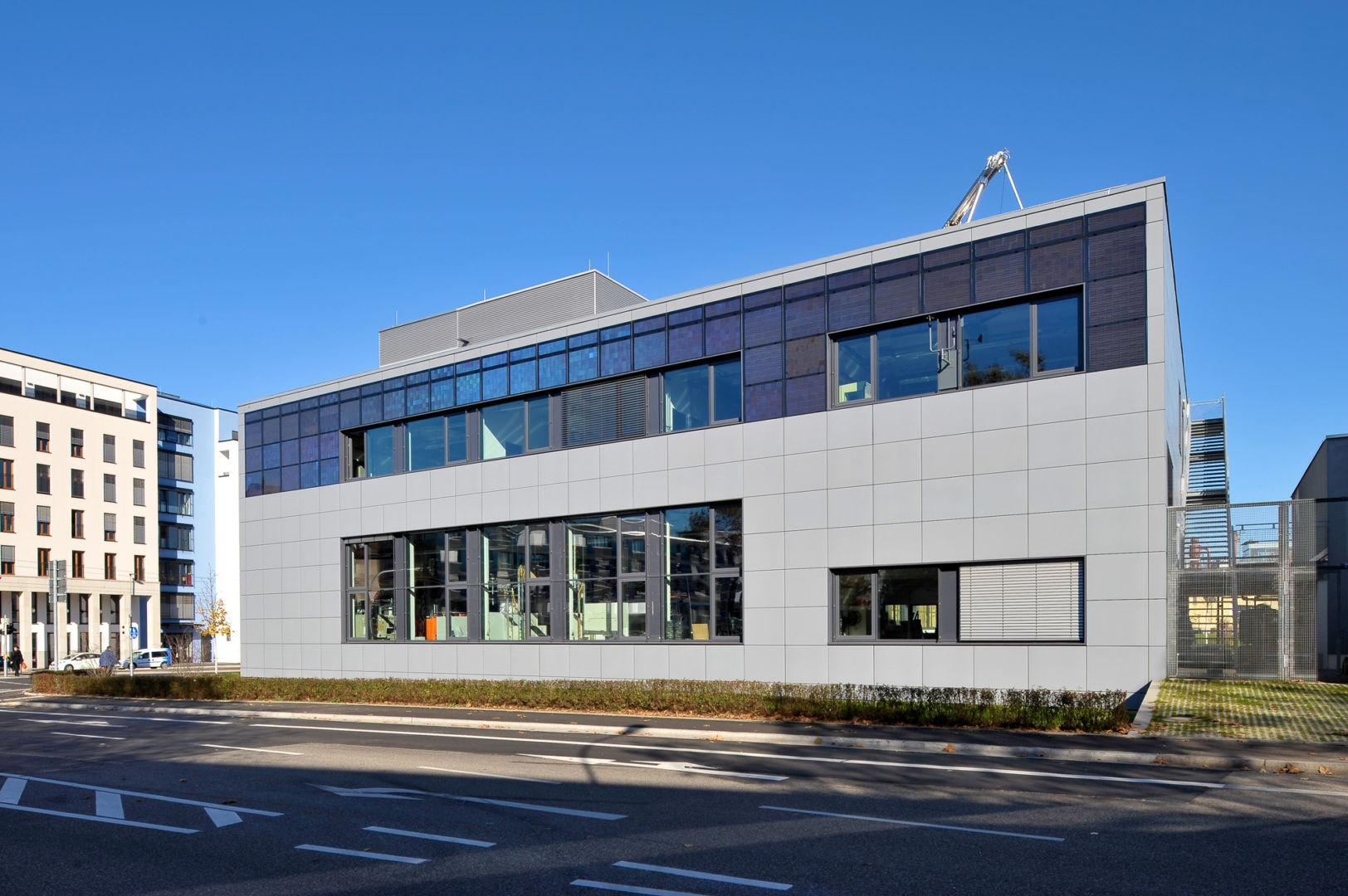It is only recently that 70 TPedge photovoltaic modules have adorned the external façade of Fraunhofer Institute for Solar Energy Systems (ISE) laboratory in Freiburg (Germany). These modules are a joint development between Bystronic glass and the Fraunhofer ISE. Ten of these modules were already integrated into the façade in 2013 and still they continue to work reliably. A further 60 modules will now follow.
The TPedge modules are the result of a long lasting project that has been running for several years with the objective of finding a less expensive, faster and more simple PV module production. Instead of taking the necessary 12 minutes to produce a PV module when adopting the standard process, a TPedge module can be produced within cycle times of less than one minute. “A modified TPS® insulating glass line along with a robot can accurately position the adhesive points with exceptional precision in terms of millimeters. This enables all insulating glass manufacturers to now be able to produce TPedge modules, and therefore expand their market“, explained Tobias Neff, Solar Product Manager at Bystronic glass. “TPS® insulating glass has been tried and tested on a global scale, which gives tremendous advantages, as it has proven itself resistant in a variety of temperatures and diverse weather conditions”, said Max Mittag, a scientist at the Fraunhofer ISE. “The installed TPS® edge seals have proven themselves millions of time over, rendering the TPedge modules climate-independent, which consequently means that they can be tailored to the requirements of all of markets”, added Tobias Neff.
Reduced costs due to the modular design
Not only is the module production simplified, reduced costs are also possible thanks to TPedge technology. This is the result of the modular design: the cell array is fixed promptly between two glass panes. The utilisation of foils and the accompanying lamination are not required, as is the case regarding the use of an aluminium frame. “This allows us to reduce the modules’ material costs by approx. 15%, in addition to us improving the age resistance, which is an additional advantage compared to standard modules“, described Max Mittag.
The TPedge modules were not only subjected to ageing tests, but also to some mechanical tests, such as a climate chamber test, a distributed load test and a hail test, passing all of them with flying colours.
The results of the long-term tests are expected by mid-2016.
Connection of two worlds
The initial contact between Bystronic glass and the Fraunhofer ISE was made at glasstec 2006 in Düsseldorf. This has developed into a successful partnership and resulted in mutual satisfaction. “For a number of weeks I often worked together with Tobias Neff at Bystronic glass and these reciprocal insights were very interesting. An especially helpful element related to the utilisation of joint resources which enabled our technologies to be tested and developed further in the industrial plant”, said Max Mittag. “One can describe the joint development of the TPedge module and the corresponding production process as a successful project on the borders between research and industry.“
Bystronic glass is also very satisfied with the cooperation at the Fraunhofer ISE. “We have already been able to positively complete the projects prior to TPedge with good results. We are looking forward with positivity to the results of the long-term tests when evaluating this experience and the successful, diverse test results”, is how Tobias Neff summed up recent years.

